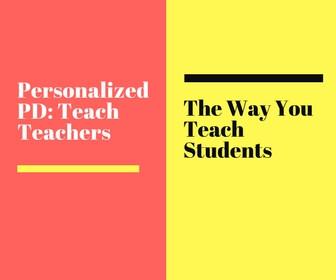“We would like to connect more with our students' families. But we just don't have time."
That's an excuse we all use, and as educators, we probably use it more often than most.
Deepening our ties with families is one of the most overlooked ways to become better educators for our students. Research shows that educators are more likely to stay at schools where they have strong partnerships with families and remain in the profession longer. Moreover, fortifying connections with families is one of the five keys to moving from good to great schools. So, why is it that we don’t devote more time to this vital realm of our roles as educators?
One reason might be that we often don’t know which practices are most impactful and thus where to focus the bulk of our energy. In addition, we might feel unsure how to reach out to families from linguistic, racial, cultural, and socioeconomic backgrounds different from our own. Recent studies show that partnering with families is the area teachers feel least confident about, in part because of how little training they have in this realm. In fact, less than one in five teachers received training on family engagement in their pre-service programs.
Capacity-Building Strategies
So what are some of the vital ways district and school leaders can support educators in partnering more effectively with families? From my learnings as a former teacher and principal, and as the current leader of my district’s Family Partnership department, here are five pathways for educators to make time an ally instead of an adversary as we work to strengthen our capacities to collaborate with families.
1. Underscore How Intentional Partnerships with Families Propel Educators’ Growth
When I took a deep dive into my district’s teacher evaluation metrics, it became clear that a surprisingly large portion of the rubric used to evaluate educators is achieved when they make a deeper investment in fortifying relationships and improving communication with students’ families. During professional development trainings on best practices, such as relational home visits, I share that when educators engage in purposeful ways of connecting with students and families, they are better equipped to incorporate students’ interests and cultures into classroom instruction and are more likely to take an empathic and less punitive approach to student discipline. Research also shows that practices like home visits help educators greatly improve their cultural responsiveness as they “become more aware of stereotypes and biases and work toward leaving them behind.”
2. Emphasize the Impact on Student Learning
The school-family partnership practices that are best for fostering higher levels of trust and better communication are also the ones that have the largest impact on student learning. In my professional learning sessions with principals and teachers alike, I highlight research from the Flamboyan Foundation that shows positive phone calls and personalized communication are the relationship-building best practices that most significantly affect student learning.
As we deepen ties with families, we learn more about the lives of our students and can incorporate this knowledge to make learning more relevant and engaging.
As we deepen ties with families, we learn more about the lives of our students beyond the classroom walls (such as what motivates and interests them, what their non-academic strengths are, and what challenges they and their families face) and can then incorporate this deeper knowledge in ways that make their learning more relevant and engaging.
3. Provide Opportunities to Interact Regularly with Families
Educators grow their capacity to better partner with families from interacting with them, rather than from receiving training. As such, I have made the primary part of my job developing what we call Families and Educators Together (FET) teams. These teams gather monthly and follow a structure we have refined over the last seven years to center parent voices and engage in meaningful dialogues that accelerate educators’ understanding of better partnership approaches.
As I outline in my new book On The Same Team, Bringing Educators and Underrepresented Families Together (Solution Tree, December 2023), our FET teams at 24 schools support our educators in identifying which partnership practices will help their school community reduce inequities, remove barriers, enhance relationships, and strengthen communication. For decades, our educators guessed what our underrepresented families needed instead of asking them. These spaces not only cultivate more teacher champions of family partnerships, but also lead to co-created and transformative action projects that ripple out across the entire staff and school community.
4. Build Family Partnerships Into PD
School or district leaders can create mini-trainings on family partnership best practices that are embedded into school-based professional development sessions. The time principals have allotted for PD is limited, so training on school-family partnership practices needs to be brief yet chock full of practical strategies. For instance, I have designed a 20-minute PD session on how staff can make parent-teacher conferences more relationship-centered, reciprocal, and meaningful for all. In this session, we explore pre-conference strategies that will both increase the likelihood of families attending their conference and help the teacher garner input to make the conversation more meaningful for all stakeholders. Additionally, we discuss six strategies to foster a highly engaging conference, as well as great questions for both educators and families to potentially ask each other to make the best use of the time allotted. Finally, we examine pathways to foster effective cross-cultural communication and discuss impactful follow-up strategies to accomplish after conferences are completed.
5. Focus on High-Leverage Practices
One of the keys to successful implementation of impactful family partnership efforts is for school leaders to carve out time for educators to engage in best practices. Not all practices for connecting with families are made equally. Many traditional practices can be helpful (classroom newsletters, Back to School Night, etc.) but they often have little impact on strengthening relationships or improving student learning. As the legendary basketball coach John Wooden put it, “Do not mistake activity for achievement.” I have seen time and again the wisdom of the Pareto Principle—that 80 percent of our results come from 20 percent of our partnership efforts.
A key to implementing impactful family partnership efforts is for school leaders to carve out time for educators to engage in best practices.
The first step is to identify high-leverage partnership practices that are based on what both research and practitioners have found to be most impactful in elevating school-family connections.
The second step is to provide staff with a compelling “why” that inspires them to take action and believe in the yet-to-be-seen fruits of their labor for all stakeholders.
The third, and perhaps most important step, is to build in the time for educators to experience the value of these practices during staff meetings or professional learning time. For example, the suggestions of parents at one of our FET schools led the principal to develop a system where once a month the last 15 minutes of a staff meeting is “canceled” and designated for all staff to make three or four positive phone calls, which leads to more than 100 families being contacted in just a quarter of an hour.
Maximizing the Time We Have
Building our capacity to more effectively partner with families does not necessarily require a significant investment of time. Instead, it asks us to take a strategic approach to how we use our time by prioritizing high-leverage practices, building in structures like Families and Educators Together teams that embed partnership best practices for educators, and allocating morsels of time that reap a host of rewards.
These experiences enhance educators’ capacity to more effectively partner with all families, create a more inclusive and equitable school community, and lead to stronger relationships that ultimately benefit students, families, and staff. When there is trust and collaboration between educators and families, children feel it. They feel accepted and valued. They feel known. Then, school and home are like parentheses, with children nested inside a community that feels connected rather than fragmented. In that kind of quality learning environment, it is safer and more enjoyable to learn.
Ari Gerzon-Kessler is the coordinator of family partnerships for the Boulder Valley School District in Colorado. He is the author of the new book On the Same Team: Bringing Educators and Underrepresented Families Together (Solution Tree, 2024). Previously, Ari served for 16 years as a principal, assistant principal, and bilingual teacher.








